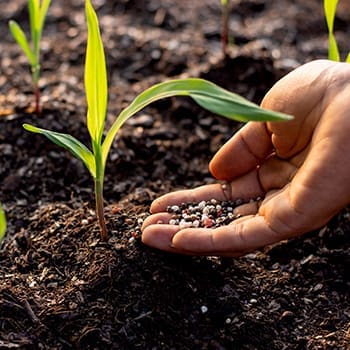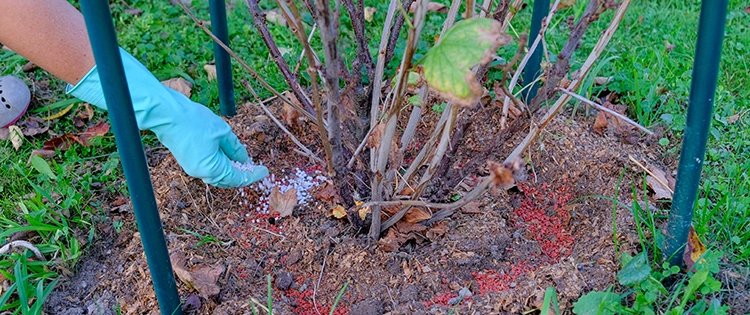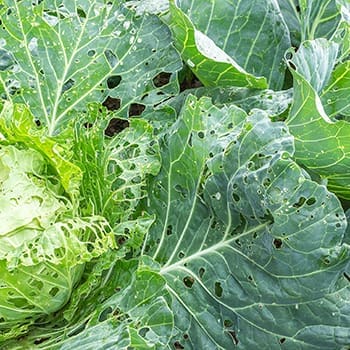Soil prep is well underway throughout most of the country and whether you’re getting ready to restore your garden or you’re still dreaming of snowless days, we’ve got you covered. Here are a few very common (and simple to fix) mistakes that people make when amending their soil. Let’s get started.
Too Much Nitrogen
Ah, but nitrogen is good for your soil, you say. It is, and it’s a very necessary part of growing your plants. Nitrogen keeps them going, it feeds them, strengthens them, and does so much else for every single plant out there. This includes hydroponic solutions and even air plants. Every plant in our known universe is a nitrogen-based compound and thrives on nitrogen-based compounds.
So why can’t we just grow in straight nitrogen or nitrogen-heavy enrichments? Bluntly, the problem comes down to the individual plant. While corn sucks almost all available nitrogen out of growing soil, it still will suffer ill effects if exposed to too much of it.
What are some of those effects? Extremely leggy plants that collapse and fall into themselves as they reach their juvenile or fully grown height level. Thin stems. Weak branches. All of these are symptoms of nitrogen-heavy soil with nothing to slow the plant from exploding and then falling apart.
If your plants are experiencing an explosive amount of growth and seem to be tipping over, add some sand or very low-quality soil to their pots or beds. This helps them deplete the nitrogen in their systems naturally.
Too Little Nitrogen
Your plants are sprouting but they either wither and die or simply aren’t really growing well. This is especially a problem in very rocky or very sandy soils, ones that rarely have a lot of nitrogen concentrate. And as someone who often grows in pretty sandy conditions, let me tell you, I sympathize.
You have one of two choices here: you can grow crops that thrive in weak soil, or you can amend it every two weeks for the rest of your life.
While that may sound strong, it does become somewhat exhausting to stand out there working nitrogen into your soil when you’ve got the flu or you’re feeling sick from some other issue. You can always amend your soil with better soil, but be aware of erosion risks and what may be left behind, if anything, for the next year.
Ultimately, my go-to in these situations is to plant something like beans or peas near the plants that seem to be doing poorly. Legumes will help boost the nitrogen content of the soil, helping to feed both themselves and the plants near them.
Calci-Yum
Calcium is a necessary component for almost all plants, but are you adding too much? Too little?
My answer here, without knowing your intentions for your crops, is to find a nice balanced additive like bone meal and read the back of the packaging. If you’re growing tomatoes in container gardens, you probably can’t overdose tomatoes. If you’re growing cucumbers in raised beds, go easy on the calcium; they’re probably getting more than enough from the limestone in your area unless you’re growing in a literal desert.
Insect Invasions
You work your beds or container garden containers, you break your back and absolutely put your heart and soul into your garden. It’s wonderful and you find it very rewarding. You love it so much. And then you see it, something gnawing holes in the leaves of your cabbages. Worming its way in. Destroying everything you’ve worked so hard for. Your cabbages.
While it may be impossible to check for every plausible insect during soil amending, we caution you to keep an eye out. Grubs and larvae are often not terribly deep and you may overturn them while you’re tilling up your garden for the year. If you do find a large amount of insect larvae, take time to identify them. Look for eggs on the undersides of your fallen leaves and in other typical areas.
Essentially, if you’re going to play in the dirt, we’re sending you on a bug hunt as well. If you find nests of predatory insects that will ruin your crops, feel free to destroy them (unless otherwise prohibited by law). You may also choose this time to go ahead and release some predatory insects that will serve your purposes of protecting your plants and getting rid of invaders that will put them at risk.
Our one caution here is to remember what you’ve sprayed or released and where. There is nothing sadder than seeing a dozen young praying mantids go running across a freshly churned garden for cover because someone forgot where they laid their egg sac, especially considering all the good work those little insects will do for you and your plants.
Over-Working
To have a solid garden, you have to work your soil. This means adding things to it based on the results from soil tests and what the needs of your intended garden are. This means that you’ll also need a good deal of research to know how to do these kinds of things. Again, for instance, tomatoes love calcium. So do most nightshades. But you won’t see a zucchini asking for more of it unless your soil is extremely poor quality; bad enough that I wouldn’t recommend growing in it.
An over-worked soil will become mushy, strangling roots and making it impossible for plants to thrive. This is sometimes called “overaerated”, but overworked is a better presentation of this. Your soil is tired. If you see your soil seizing, let it rest. Give it some worm casings and some dry, well-crushed manure and gently pitchfork it around after a week or two of resting it. This lets the nutrients and microbes in the soil relax, giving you a second chance with your soil.
Have you run into any of these problems? What did you do to fix them? Tell us about it in the comments, we’d love to hear from you. And remember, Happy Gardening!
You may also like:
How To Use Weeds To Read Your Soil
Similar to Morphine: The Best Natural Painkiller that Grows in Your Backyard (Video)
25 Crops You Can Grow In Buckets All Year Round
Seed Mistakes To Avoid At All Cost
5 Ingenious Methods To Get FREE WATER In All 50 States During A Crisis










